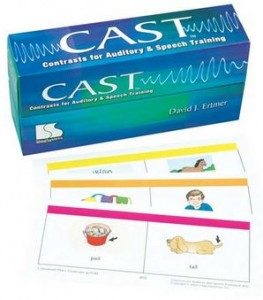
- #AUDITORY DISCRIMINATION TASKS SPEECH THERAPY HOW TO#
- #AUDITORY DISCRIMINATION TASKS SPEECH THERAPY FULL#

#AUDITORY DISCRIMINATION TASKS SPEECH THERAPY HOW TO#
Then, train the parents on how to encourage these words during everyday situations and show them how to prompt the child to say the word more correctly. Encourage Practice at Home: If the child is able to practice the words in isolation at home, train the parents on how to cue the child to produce the words correctly in isolation.Each time the word comes up, stop and help the child practice saying that word correctly.

Choose activities that will allow multiple opportunities to practice the target words. Practice Words During Play: Once the child loses interest in the direct drill of the words in isolation, move to some fun play activities.Accept gradually more accurate approximations of the word if the child is not able to produce the word completely correctly at first. Use tactile, verbal, and visual cues to encourage correct production of the sounds in the words. Practice Words in Isolation: At the beginning of your session, have the child practice saying the list of words in isolation.They should also include sounds that you want to target during your speech practice. Choose a List of Words: This should be a short list of words that the child can use in a variety of situations (common words).You’ll also find sample text for your goals. The following therapy guides represent our task analysis for each skill. What’s important is that the steps are achievable and sequential so that the child sees incremental success on the way to learning a new skill.

Every SLP may have a slightly different method of breaking down skills into step-by-step plans. While the process of task analysis has been studied and backed by research, there aren’t always agreed-upon ways to break down a skill. Tasks analysis is an evidence-based instructional method which has been found especially effective for children who do not respond to regular instruction, which makes it perfect for the children on our case loads.
#AUDITORY DISCRIMINATION TASKS SPEECH THERAPY FULL#
With each step that the child masters, he grows closer to being able to perform the full skill independently. Task analysis is the process of breaking a larger skill down into smaller, sequential steps. Step-by-Step plans for a variety of speech sound therapies- Plus, wording for your goals!


 0 kommentar(er)
0 kommentar(er)
